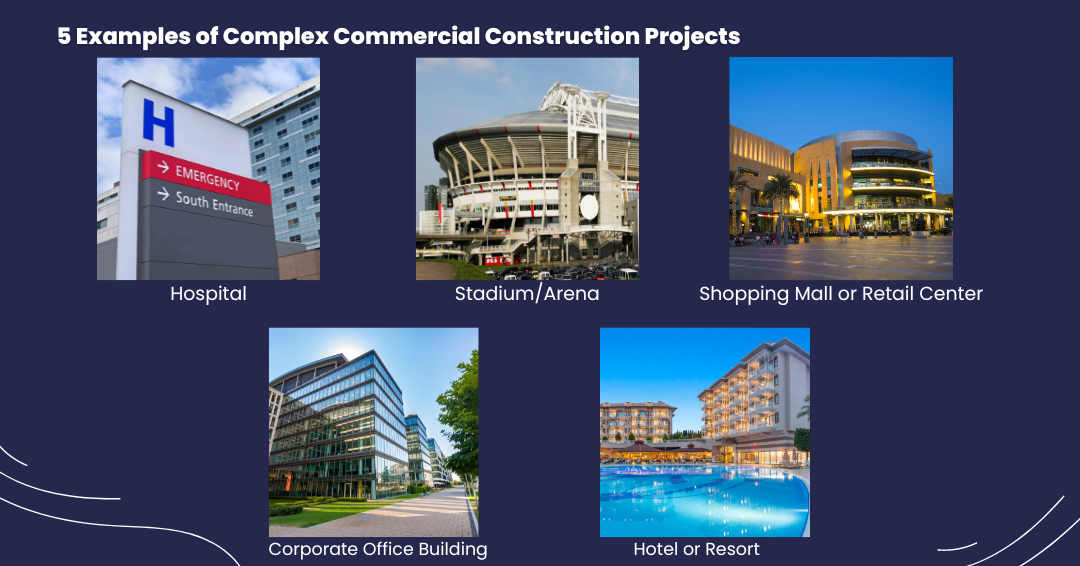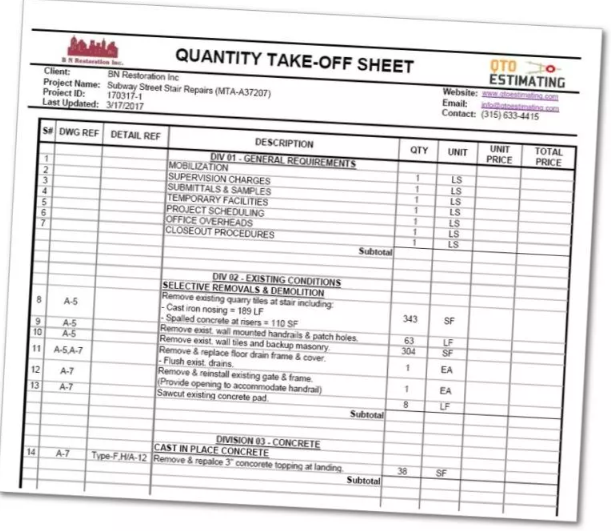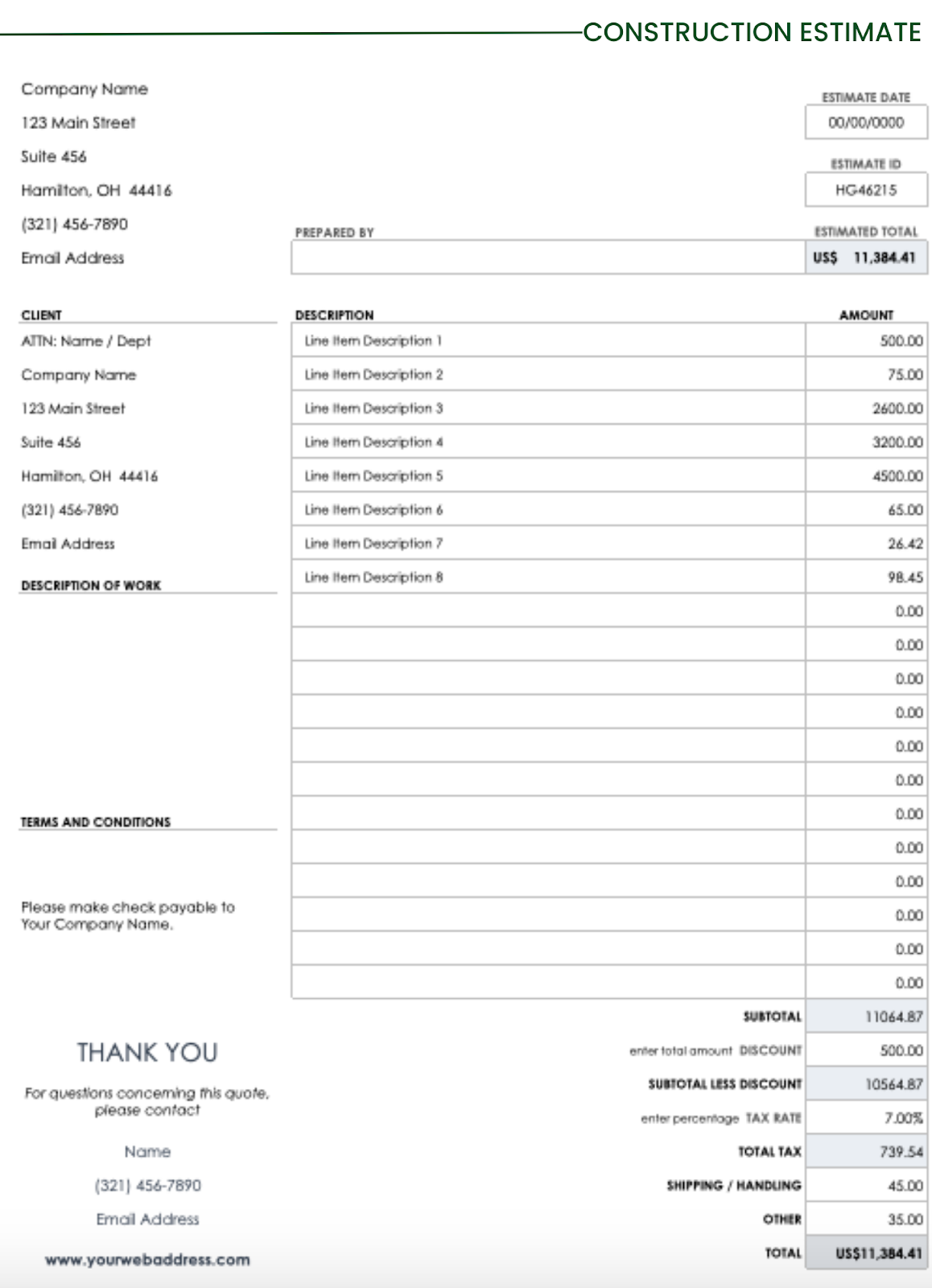How to Meet Construction Cost Estimating Deadlines
Togal.AI
|
As a cost estimator, it’s important to produce accurate cost estimates on time for any construction project. But it can also be challenging to meet tight deadlines when you face various obstacles, such as complex projects, insufficient information, or inadequate tools and resources. These obstacles can lead to missed deadlines and jeopardize the project’s success, which can lead to losing bids, project delays, cost overruns, and unhappy clients.
How can you overcome these obstacles and improve estimating efficiency and accuracy? One way is to use pre-built templates and calculators that simplify the estimating process and eliminate errors. Another way is to use Togal.AI, an advanced AI takeoff software that helps you complete takeoffs with up to 98% accuracy in just under a minute, saving you time and reducing errors.
In this article, we will discuss the common problems that lead to missed estimating deadlines, along with the solutions that can help you submit on time with confidence and efficiency. Whether you are an experienced estimator or a beginner in the field, you will find valuable insights and tips in this article that will enhance your estimating skills and ensure project success.
Problems that Lead to Missed Cost Estimating Deadlines
Below are some of the challenges that may lead to missed deadlines when it comes to cost estimation.
1. Lack of Information
To create a cost estimate for a large-scale commercial project, estimators must access all of the relevant information related to the project. This helps them avoid spending more time researching and verifying the data, which can delay the project timeline.
For instance, if the scope of work is unclear, the estimator must consult with the project manager or other stakeholders to understand what the project needs. This consultation takes additional time and may delay the estimation process.
Likewise, inconsistent or incomplete information forces the estimator to verify the data or fill in the gaps, which can also cause delays. This verification may involve contacting suppliers or other vendors to get more information about materials or resources or consulting with subject matter experts to understand the technical requirements of the project.
Some of the Information That Estimators Need:
Below is some of the information that an estimator may need to deliver accurate cost estimates on time.
2. Complexity of the Project
Cost estimators may face challenges in meeting deadlines for complex construction projects because they often need a higher level of expertise and experience to estimate the costs of each component accurately.
Complex projects may include multiple design elements, advanced technologies, and specialized materials, which the estimator may not be familiar with. This lack of familiarity can make it hard to estimate the costs of each component accurately, which can cause delays in the estimating process.
Moreover, cost estimates for complex projects may need more research and analysis to produce, which can further slow down the process and make it difficult to meet the deadline.
5 Examples of Complex Commercial Construction Projects

Below are some examples of large and complex commercial construction projects that may need a higher level of expertise to estimate.
3. Inadequate Tools and Resources
Estimators trying to meet construction cost estimating deadlines may face a major problem if they lack adequate tools and resources. They need specialized tools and resources that can help streamline the process and minimize the potential for errors.
For instance, AI takeoff software can help estimators quickly calculate the amount of materials needed for a project, while templates and calculators can help standardize the process and reduce the time needed for manual calculations.
If they do not have access to these tools and resources, estimators may have to rely on manual methods, which can be error-prone and can significantly slow down the process, making it hard to meet deadlines.
8 Limitations of Using Manual Methods for Cost Estimation
Below are some of the downsides of using manual methods in construction cost estimating:
- Time-Consuming
Manual methods, such as using pen and paper or spreadsheets, can take weeks to complete, which can slow down the estimating process and make it difficult to meet tight deadlines.
- Error-Prone
Manual methods are also prone to errors, such as data entry errors, miscalculations, or incorrect formulae, which can result in inaccurate cost estimates and potential cost overruns.
- Limited Ability to Handle Complex Calculations
Manual methods may not be able to handle complex calculations, such as those needed for large and complex construction projects, resulting in inaccurate estimates and delays.
- Limited Ability to Handle Large Amounts of Data
Manual methods may not be able to handle large amounts of data, making it hard to process and analyze data quickly, resulting in a slow estimating process.
- Limited Standardization
The lack of standardization can result in inconsistencies in the estimating process, which can lead to discrepancies and inaccuracies in the final cost estimate.
- Physical Space
Using pen and paper for manual takeoffs requires physical space to store documents, such as blueprints, drawings, and notes. Estimators may need a large workspace to manage and organize all the materials needed for the estimating process.
- Difficulty in Making Updates and Edits
Manual methods can make it hard to make updates and edits to cost estimates. Changes may require erasing, crossing out, or starting over, which can take a lot of time and lead to errors.
- Limited Collaboration
It’s also difficult to work on a takeoff simultaneously with another team member or estimator if you’re doing it manually. Only one person can work on the physical document at a time, leading to delays and potential miscommunications.
- Laborious Takeoff Process
Takeoffs involve listing the materials a project needs, together with their estimated quantities and unit costs. The process can consume weeks especially when done manually or with outdated digital software.
There are two types of takeoff: manual and digital.
Manual Takeoff
You use paper plans and a scale ruler to manually measure the dimensions of each material and determine the quantities required. While it can be precise if done with care, it’s a slow and tedious process that can be susceptible to human errors.
Digital Takeoff
This process is faster and more accurate compared to manual takeoffs. With the use of software applications, estimators can analyze digital plans and perform measurements on a computer screen. However, this process still requires plenty of manual data input and editing to achieve the desired output. Some applications also have complicated interfaces that may require training to use.
Solutions to Meet Cost Estimating Deadlines
Below are some of the key strategies for meeting cost-estimating deadlines:
- Clarify Project Scope
A clear project scope prevents scope creep and miscommunications that can cause delays and extra costs.
To achieve a clear project scope, estimators need to:
- Identify the key team members who have the information about the project scope and requirements. These may include the project manager, architects, engineers, and contractors.
- Arrange a meeting with these team members to discuss the project scope in detail.
- Attend meetings and site visits to clarify any questions that you have.
- Ask specific questions during the meeting to understand the project objectives, budget, timeline, and any other requirements. Find out any potential challenges or risks that may affect the estimate.
- Write down the project scope and share it with all relevant team members. This will ensure that everyone agrees on the scope and that there are no misunderstandings or miscommunications that could lead to missed deadlines.
- Choose Projects Carefully
With months and thousands of dollars spent preparing a cost estimate and proposal, a general contractor must be selective on which projects to respond to. This should be based on their likelihood for success, the complexity of the project, and the current capacity of the team to handle it.
This is why it’s essential to scrutinize the Request for Proposal (RFP) according to the probability of success. After reviewing the RFP and gaining an understanding of the scope of work, evaluate the following points:
- Is the scope of work aligned with your expertise and experience?
- Will the project yield an acceptable profit?
- Is the deadline for the submissions of cost estimates realistic and manageable?
It is important to be selective on which RFPs to respond to as each response takes ample time and financial resources to prepare.
- Use Historical Data
Using historical data is a valuable tool for estimators, as it can help them save time and increase accuracy when estimating construction costs. It can provide a reference point for estimators to compare current projects against similar projects in the past.
Consequently, they can use this data to determine patterns and trends in costs that can help them make informed estimates. It can also significantly reduce the time required for research and analysis, allowing estimators to complete their work with better efficiency.
Here are the things estimators need to do to leverage historical data:
- Access historical data from previous projects that are available in industry resources or company databases.
- Organize these databases through specialized software or tool.
- View previous projects that are similar in scope, size, and complexity to your current project.
- When choosing your reference, consider factors like location, project type, building materials, and labor requirements.
- Analyze the data to determine differences and commonalities among the projects, then use this information to estimate costs for the current project.
- Remember to adjust for inflation and changes in market conditions.
- Determine unique risk factors and contingencies required for the current project.
- Use Templates and Checklists
Use templates and checklists to ensure that all required components are included in the estimate. This can help make sure that nothing is overlooked, reducing the likelihood of errors or omissions. This can also help standardize the takeoff and estimating process, which can reduce the time spent on research and analysis for each new project.
Below are some sample templates that you can leverage.
Quantity Takeoff Sheet by QTO ESTIMATING
Below is a takeoff sheet example with the list of materials needed. It also includes a breakdown of material quantity and total costs.


Download a complete version of QTO ESTIMATING’s quantity takeoff sheet here.
Basic Construction Estimate Template by SmartSheet
This is a simple construction estimate template that provides the bare minimum information. It’s versatile and great for smaller projects. You can customize it by adding new fields or sections to meet your project needs.

Download the template here.
You can get more templates from our article - 5 free construction estimate templates that general contractors need to know.
- Leverage AI Takeoff Software
Togal.AI is one of the most advanced pre-construction technology in the industry. It’s backed by artificial intelligence and machine learning to automatically detect, measure, compare, and label project spaces and features on architectural drawings.
With AI takeoff software, Togal.AI, you can meet cost-estimating deadlines by completing takeoffs in just under a minute with up to 98% accuracy.
You can also further speed up the cost-estimating process with the following Togal.AI features:
- Automatically detect and measure elements such as walls, doors, windows, rooms, symbols, and more from PDF or CAD drawings without manual clicking or tracing.
- Automatically label and classify the detected elements based on their geometry or textual description, saving time and reducing errors.
- Analyze any drawing no matter the file type.
- Leverage cloud-based collaboration to simultaneously work with multiple team members on any device, anytime and anywhere, as long as there’s internet access.
Togal.AI can help you complete takeoffs and cost estimations faster than estimators and general contractors who use manual and digital takeoffs not backed by AI. This is because AI takeoffs leverage machine learning algorithms that can learn from data and improve over time. This makes them more intelligent, adaptable, and reliable than manual or digital methods.
- Use Calculators
Use standardized formulas and methods with ease and automate calculations for different items such as roofing, lumber, concrete, and drywall calculation. Doing so can improve the speed and accuracy of your calculations.
Below are a few examples of calculators that you can use:
Lumber Takeoff Calculator
Calculate the number of studs, top/bottom plates, sheets of plywood, or the board footage. All you need to do is input how many studs the wall has, wall length, wall height, and stud spacing.

Drywall Calculator
Simply input room dimensions, door and window sizes, ceiling options, and panel types to calculate the room surface area, the net room area, and the total cost of drywall.

If you want to learn more about various calculators you can use to speed up the cost estimating process, you can also visit the following sites:
Meet Construction Cost Estimating Deadlines with Togal.AI
Meeting cost-estimating deadlines is crucial for winning construction projects or bids. This is because a missed deadline can result in losing a potential project, which could mean thousands of dollars.
With the use of various tools, like templates, calculators, and AI-powered takeoff software, estimators can significantly speed up the cost-estimating process. With these tools, estimators can standardize the estimating process, automate error-prone manual procedures, and increase overall efficiency.
For example, Togal.AI can automate the detection, measurement, and labeling of project spaces and features on drawing. This helps reduce the time it takes to complete takeoffs from weeks to just under a minute with up to 98% accuracy.
Therefore, if construction companies are struggling to meet their cost-estimating deadlines, using Togal.AI can be an effective solution to improve efficiency and accuracy in the takeoff process. This can lead to several benefits, including faster project completion, reduced costs, improved profitability, and greater competitiveness in the marketplace.
Want to streamline your construction takeoff services and ensure you meet deadlines? Explore how Togal.AI can streamline the takeoff construction process. Take a self-guided tour of Togal, book a custom demo, or get sign up for Togal.AI today.
